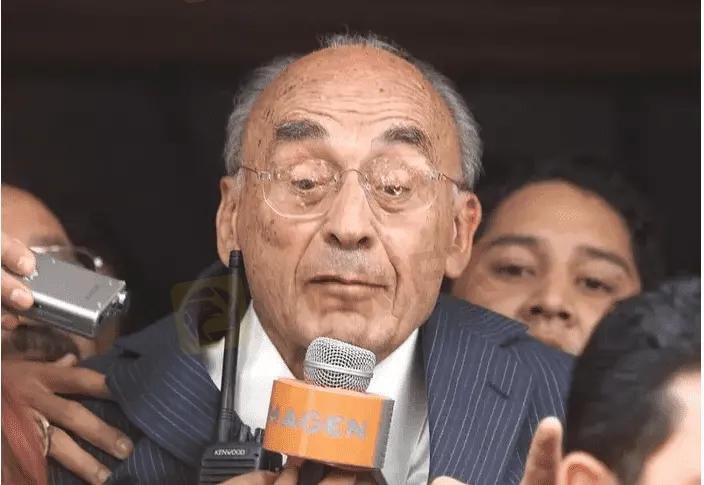简体中文
繁體中文
English
Pусский
日本語
ภาษาไทย
Tiếng Việt
Bahasa Indonesia
Español
हिन्दी
Filippiiniläinen
Français
Deutsch
Português
Türkçe
한국어
العربية
Former Mexican President Echeverria, famed for role in repression, dies at 100
Abstract:Mexico’s former President Luis Echeverria, who was in power from 1970 to 1976, has died, President Andres Manuel Lopez Obrador said on Saturday. He was 100 years old.

Mexican President Andres Manuel Lopez Obrador on Twitter confirmed the death on Saturday, expressing his condolences to Echeverrias family.
As an elderly man, Echeverria escaped attempts by Mexican prosecutors to indict him for genocide for his role in two infamous massacres of student protesters in 1968 and 1971 that helped define an era of heavy-handed state repression.
Bald and bespectacled, Echeverria denied wrongdoing and said his conscience was clear. He refused to testify about crimes that have not been fully cleared up to this day.
A loyal son of the Institutional Revolutionary Party, or PRI, which ruled Mexico for 71 years until its ousting in a 2000 election, Echeverria believed in preserving the all-encompassing party system that reached into every sphere of public life.
His 1970-1976 presidency was tainted from the outset by accusations that he ordered troops to open fire on thousands of peacefully demonstrating students in the Mexico City area of Tlatelolco on Oct. 2, 1968 while serving as interior minister.
At the time, the government said just 30 people had been killed and injured in the massacre, carried out days before the Olympic Games opened in Mexico City. Some witnesses said many more bodies were carted off from the scene.
Hundreds of students were beaten and jailed after the protest, which occurred when student uprisings were erupting worldwide. A definitive death toll has never been given.
Crackdowns and economic woes
As interior minister, Echeverria led a group of top officials crafting a response to the student uprisings, according to declassified U.S. government documents.
Keen to wipe the slate clean during his presidency, Echeverria promised a “democratic opening”. He released people imprisoned after the massacre and courted the intellectual left, promoting them to prominent positions in government.
But from the late 1960s to early 1980s, activists say PRI security forces were responsible for a brutal campaign against leftist intellectuals and critical journalists, many of whom were killed and disappeared during Echeverrias rule.
On June 10, 1971, the day of the Corpus Christi Catholic celebration, a paramilitary force known as Los Halcones, or The Falcons, attacked a student protest with pistols, rifles, tear gas and batons, killing or wounding dozens of demonstrators.
Born on Jan. 17, 1922 to a middle class family in Mexico City, Echeverria was know for embracing a leftist foreign policy while cozying up to Washington.
U.S. President Richard Nixon was fond of Echeverria.
“Hes strong, he wants to play the right games,” Nixon said of Echeverria in a recorded conversation with the director of the Central Intelligence Agency.
During his presidency, Echeverria had plans to redistribute lands of the wealthy to peasants and espoused a protectionist economic policy of high tariffs, state intervention and preference for domestic products.
As the public sector ballooned and government borrowing soared, Echeverria alienated the business class, which stopped investing and sent its capital out of the country.
Mexico‘s foreign debt sextupled and the peso’s value almost halved during Echeverrias term in office, leading to a currency devaluation shortly before his term expired.
In 2006, a judge ordered Echeverria to be placed under house arrest for his connection to the student killings.
But in March 2009, a court ruled the army crackdown did not qualify as genocide, and upheld prior rulings that a 30-year statute of limitations for the crimes had expired.
In 2020, after some 10 years out of the public eye, Mexican media photographed Echeverria waiting in a wheelchair to receive a COVID-19 vaccine, wearing a wide-brimmed straw hat and rolling up the sleeve of a lilac-colored shirt for the shot.

Disclaimer:
The views in this article only represent the author's personal views, and do not constitute investment advice on this platform. This platform does not guarantee the accuracy, completeness and timeliness of the information in the article, and will not be liable for any loss caused by the use of or reliance on the information in the article.
Read more

XTB Hack 2025: Major Security Breach Exposes Client Accounts
XTB suffers a major hack in 2025, with hackers draining client accounts and sparking urgent security upgrades. Learn how the breach unfolded and what’s next.

XTB Hack 2025: Major Security Breach Exposes Client Accounts
XTB suffers a major hack in 2025, with hackers draining client accounts and sparking urgent security upgrades. Learn how the breach unfolded and what’s next.

Want to Succeed in Forex? Start with the Right Trading System
If you want to trade currencies and make money in the long run, you need a good forex trading system. Many new traders enter the market without a clear plan. Some rely on luck or tips from others. But trading without a system often leads to losses.

Mumbai Police Nabs Black Paper Dollar Conversion Forex Scam Perpetrators: Check Out the Details
The crime branch of the Mumbai Police has nabbed a racket involved in duping people by claiming to convert black paper into dollars. Check this unique 24.7-lakh scam story.
WikiFX Broker
Latest News
US Government Interest Grows in Victory Metals’ Rare Earths Supply
How Are Trade Policies Affecting the Aluminum Market?
RM71,000 Lost in a Share Scheme That Never Existed
Scammed by a Click: He Lost RM300,000 in a Month
Manual vs. Automated Forex Trading: Which One Should You Choose?
Revealing Factors That Help Determine the Gold Price in India
Why Regulatory Compliance Is the Secret Ingredient to Trustworthy Forex Brokers
Pentagon to become largest shareholder in rare earth miner MP Materials; shares surge 40%
Delta shares jump 12% after airline reinstates 2025 profit outlook as CEO says bookings stabilized
Delta shares jump 13% after airline reinstates 2025 profit outlook as CEO says bookings stabilized
Currency Calculator


